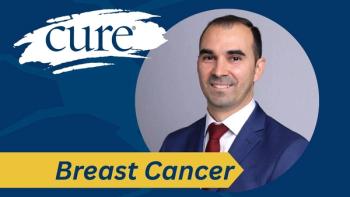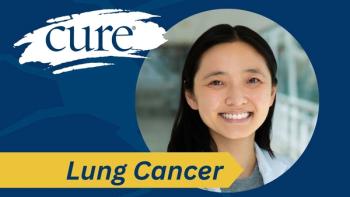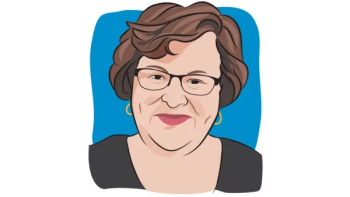
Expert Oncologist Breaks Down Newest FDA Approval in Lung Cancer
Key Takeaways
- Datroway is the first antibody-drug conjugate approved for EGFR-positive NSCLC, offering a new treatment class for patients with prior targeted therapy and chemotherapy.
- The drug targets tumor cells by binding to the TROP2 receptor, delivering a cytotoxic payload directly to the tumor, minimizing systemic exposure.
Following the June 2025 FDA approval of Datroway, Dr. Jacob A. Sands explained the significance of the regulatory approval for patients with lung cancer.
Following the June 2025 U.S.
Specifically, the FDA approved Datroway for use in patients with non-small cell lung cancer (NSCLC) that has an epidermal growth factor receptor (EGFR) mutation, as well as patients whose disease has progressed following treatment with an EGFR-targeted therapy and platinum-based chemotherapy.
“This represents a new, previously unused treatment option for patients who have NSCLC with EGFR mutations,” Sands, a physician at the Dana-Farber Cancer Institute in Boston, emphasized in the interview. “This represents the first antibody-drug conjugate, which is a whole new class for EGFR-positive NSCLC.”
In addition to discussing
Sands also serves as associate chief of the Lowe Center for Thoracic Oncology and oncology medical director of International Patient Center at the Dana-Farber Cancer Institute. Additionally, he is an assistant professor at Harvard Medical School.
CURE: What is the significance of the FDA approval of Datroway for patients with previously treated EGFR-mutated NSCLC?
Sands: This represents a new, previously unused treatment option for patients who have NSCLC with EGFR mutations. In that setting, an array of other treatments exists, and the initial treatment is typically a targeted therapy, with a couple of different options from which to choose. Chemotherapy is another option that can be given along with targeted therapy from the beginning or as a second treatment. This new treatment, datopotamab deruxtecan — the full name is a mouthful, so we often say Dato-DXd, the brand name being Datroway — is FDA-approved for someone who has already had targeted therapy and chemotherapy.
To lay some groundwork, the chemotherapy utilized for this type of lung cancer typically does not cause hair loss. Usually, I know people picture a lot of nausea and vomiting, but that is not often experienced, especially not severely. If it occurs, it's usually mild. This is just to say that these treatments are often a lot easier than what people expect. It's not to say that anyone wants these kinds of treatments, of course, but this has been a big advance.
There have been multiple advances in the field; I'd say, from 20 years ago, there were medications that prevent nausea, which made chemotherapy far better tolerated. Additionally, in the last little over 10 years, we've seen the advent of targeted therapies, and we now have an array of those. This represents the first antibody-drug conjugate, which is a whole new class for EGFR-positive NSCLC. Antibody-drug conjugates are an antibody that essentially binds to the tumor cells and delivers a payload, which is a kind of chemotherapy or a cytotoxic agent, directly inside the tumor cells.
This is a way of essentially getting the chemo to those cells directly instead of widely throughout the body.
Can you explain how antibody-drug conjugates such as Datroway work to selectively target and destroy tumor cells in lung cancer?
Antibody-drug conjugates are a whole new class of drugs throughout oncology. While they were used in other cancer treatments before, we now have an array of different antibody-drug conjugate treatments for lung cancer. The antibody is something that finds a specific receptor on the tumor cells, in this case, TROP2. So, there's a TROP2 receptor, and Datroway finds the cells and binds to them with the antibody.
That leads to the cell pulling that compound into the cell, which is where the payload, a type of chemotherapy, is released. The payload is held by a linker. So, an antibody-drug conjugate has three components: the antibody, which binds to a certain receptor on the cells; the payload; and a linker, which holds that payload. The linker is very specialized in this case, and I think they've really dialed that to the right point where you want that payload to be released in the tumor cells, not more broadly. What we see from this is that it looks like this payload is successfully being released into and around those tumor cells.
The payload is also something that's able to cross the membranes across the outer layer that's holding the cells together. This means that when it gets delivered to a cell and released in that area, it is able to then go into the other tumor cells around it. This is called a bystander effect.
That's a surface-level explanation of how this drug works and how it's able to specifically target and deliver that treatment to the tumor cells in the tumor environment.
Can you expand on the trial and its data that led to the FDA's decision to approve the treatment?
There are two trials that are really worth discussing. The first one is called TROPION-Lung 01. This was a randomized trial, meaning patients had a 50% chance of which treatment they got, but they knew what they were getting. This trial enrolled anyone with non-small cell lung cancer, which is a much broader group than just EGFR. The two main categories are squamous and non-squamous, and then there are tumors with actionable genomic alterations.
These are mutations in the tumor's DNA that we can target with a specific treatment. This is why doctors emphasize the importance of testing the DNA of tumor cells for the majority of people diagnosed with non-small cell lung cancer. The DNA of the tumor cells is not the same as normal DNA. Mutations cause these cells to become tumor cells, and some of them can be targeted, which is what EGFR is.
TROPION-Lung 01 enrolled people more broadly, as I've described. If they had a tumor with these actionable genomic alterations, they had to have previously received targeted therapy as well as chemotherapy. In patients whose tumors did not have those kinds of alterations, they had to have received chemotherapy and immunotherapy. What we saw from the trial is that in non-squamous non-small cell lung cancer, with adenocarcinoma being the most common, there was a statistically significant and meaningful improvement in the time that the disease was controlled on Datroway compared to docetaxel. However, the greatest benefit was seen in tumors with actionable genomic alterations. This was true for the time that the disease was controlled and for the trend of improvements seen in how long people lived.
We saw an improvement in the non-squamous non-small cell group, but especially in those with actionable genomic alterations. Among that group, EGFR was the most common and also looks like it had the best outcomes. So the EGFR subgroup is really the area where we see the best effect from using Datroway.
There was also another trial called TROPION-Lung 05 that was single-arm, meaning every patient got the same treatment, which was Datroway. Since everybody in that trial had tumors with actionable genomic alterations, they all had to have received prior targeted therapy as well as prior chemotherapy. This is essentially the same as what I just described from TROPION-Lung 01 for tumors with actionable genomic alterations. From that single-arm study, we also saw a comparable and meaningful improvement from what we would typically expect. It was a single-arm trial, so there wasn't a comparison in the study itself. We compared it to what we expected, and that also looked quite promising, especially for the tumors that had EGFR mutations.
The FDA reviewed both of these trials and the full data around Datroway. From a toxicity and side effects standpoint, we have far more data to look at because there were a lot of people without the EGFR mutation in their tumors who were enrolled in TROPION-Lung 01 and other studies before that. So we can really see what the toxicity and risk look like. Then we look at the cohorts I've described and ask, "What does the benefit look like?" Weighing these factors out led to what I think was an expected approval by the FDA, which has now been confirmed for tumors with an EGFR mutation that have previously received targeted therapy and chemotherapy.
Reference
- “Datopotamab Deruxtecan in Advanced or Metastatic Non–Small Cell Lung Cancer With Actionable Genomic Alterations: Results From the Phase II TROPION-Lung05 Study,” by Dr. Jacob Sands, et al., Journal of Clinical Oncology.
Transcript has been edited for clarity and conciseness.
For more news on cancer updates, research and education,





